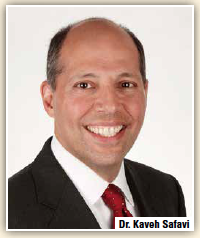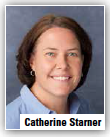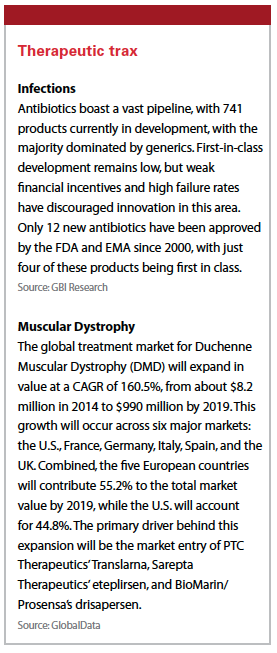Uptake of Digital Records Not sufficient to Drive Better Care
Trending now: Despite increased use of electronic medical records, fewer U.S. doctors believe it improves health outcomes.
 Most U.S. doctors are more proficient using electronic medical records (EMR) than they were two years ago, but fewer believe that EMR has improved treatment decisions, reduced medical errors, or improved health outcomes, according to a new survey by Accenture.
Most U.S. doctors are more proficient using electronic medical records (EMR) than they were two years ago, but fewer believe that EMR has improved treatment decisions, reduced medical errors, or improved health outcomes, according to a new survey by Accenture.
The U.S. findings, part of a six-country survey of more than 2,600 physicians, including roughly 600 in the United States, found that healthcare IT use among doctors has averaged double-digit growth, since Accenture conducted a similar survey in 2012. But despite doctors increasing their use of technology over that time, fewer physicians believe that EMR has improved treatment decisions (46% in 2015 vs. 62% in 2012), reduced medical errors (64% vs. 72%), and improved health outcomes for patients (46% vs. 58%).
“The industry is facing the reality that digital records alone are not sufficient for driving better, more efficient care in the long-term," says Kaveh Safavi, M.D., who leads Accenture’s global health business. “The findings underscore the importance of adopting both technology and new care processes, as some leading health systems have already done, while ensuring that existing shortcomings in patient care are not further magnified by digitalization. The U.S. healthcare market has made remarkable progress in EMR adoption, and we believe that as the technology evolves, so too will the benefits to physicians and patient care."
EMR Market Grows
The market for electronic medical records and health records (EMR) reached $24.9 billion in 2014, according to Kalorama Information. The healthcare market research publisher cites government incentives, system upgrades, fear of penalties, and the quest for efficiency in healthcare organizations as factors. Sales grew 10% from 2012 to 2014, as more physicians and hospitals use EMR and acquire EMR systems, and as hospitals and physician groups upgrade existing systems.
Kalorama expects the market to rise to $35.2 billion by 2019. Kalorama’s forecast assumes the trend of adoption will continue to move forward, although slowing; hospital EMR adoption will supersede doctors EMR adoption; and current EMR Stage 3 will move up in stages.
It is anticipated that current EMR owners will upgrade and train on systems, and that the threat of penalties will force doctors and hospitals to make upgrade decisions.
 “Expect growth this year and next at 7% to 8% and stable growth until 2019," says Bruce Carlson, publisher of Kalorama Information. “Eventually, there will be market saturation but this is a bit of a way off, especially in emerging markets."
“Expect growth this year and next at 7% to 8% and stable growth until 2019," says Bruce Carlson, publisher of Kalorama Information. “Eventually, there will be market saturation but this is a bit of a way off, especially in emerging markets."
Opioids Used Inappropriately
In an analysis of 12 million commercially insured members, Prime Therapeutics found that between July 2013 and September 2014, 8.8% of members had at least one opioid claim. Of these members, 93.7% received only short-acting opioids during the period, which is the preferred, first-line treatment.
Only 1% received only long-acting opioids and 5.3% received both long and short-acting opioid. Among those with an opioid claim, low back pain was the most common diagnosis among all opioid users. Specifically, 22.2% of those receiving long-acting opioids had been diagnosed with low back pain, 4.9% with headache and 2.3% with fibromyalgia. On average, the cost for those taking short-acting opioids was $72 per member, compared with $907 per member taking only long-acting opioids.
“Inappropriate, prolonged opioid use could result in safety risks, as well as add costs for members and their health plan," says Catherine Starner, Pharm.D., principal health outcomes researcher for Prime. “Identifying these members and helping them find the most appropriate pain treatment for their condition could help reduce safety concerns." (PV)
~~~~~~~~~~~~~~~~~~~~~~~~~
Therapeutic Trax
Infections
Antibiotics boast a vast pipeline, with 741 products currently in development, with the majority dominated by generics. First-in-class development remains low, but weak financial incentives and high failure rates have discouraged innovation in this area. Only 12 new antibiotics have been approved by the FDA and EMA since 2000, with just four of these products being first in class.
Source: GBI Research
Muscular Dystrophy
The global treatment market for Duchenne Muscular Dystrophy (DMD) will expand in value at a CAGR of 160.5%, from about $8.2 million in 2014 to $990 million by 2019. This growth will occur across six major markets: the U.S., France, Germany, Italy, Spain, and the UK. Combined, the five European countries will contribute 55.2% to the total market value by 2019, while the U.S. will account for 44.8%. The primary driver behind this expansion will be the market entry of PTC Therapeutics’ Translarna, Sarepta Therapeutics’ eteplirsen, and BioMarin/Prosensa’s drisapersen.
Source: GlobalData











